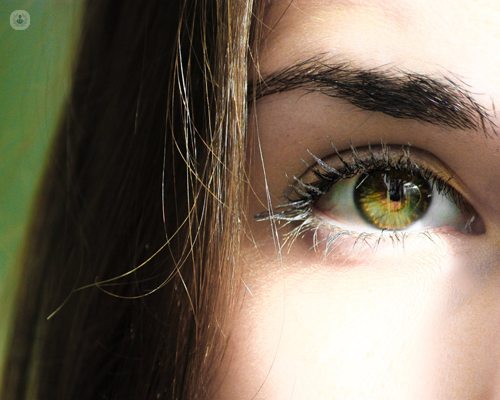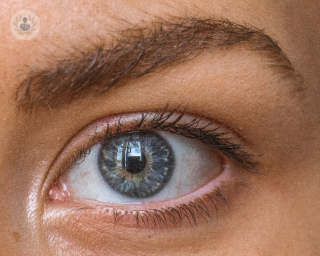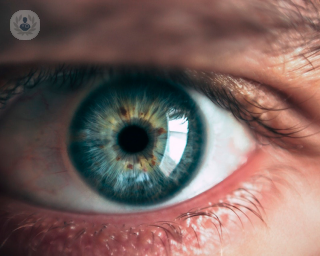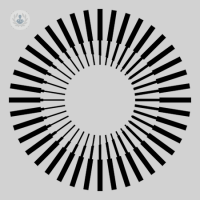Intravitreal injection
Mr Vaughan Tanner - Ophthalmology
Created on: 02-09-2016
Updated on: 09-19-2023
Edited by: Sophie Kennedy
What is an intravitreal injection?
An intravitreal injection is form of administering treatment for various eye disorders, such as macular degeneration. Treatment usually consists of using anti-VEGF drugs (which prevent the development of new blood vessels), immunosuppressive agents or anti-inflammatory drugs.

What are intravitreal injections for?
Intravitreal injections can decrease the progression of a number of visual disorders, including:
- Wet age-related macular degeneration (and in the near future, dry age-related macular degeneration)
- Diabetic maculopathy
- Retinal vein occlusion
- Macular oedema
What does an intravitreal injection involve?
An intravitreal injection is done under local anaesthetic, administered via eye drops, in an out-patient operating theatre. A speculum is usually used to keep the eyelids still and to decrease the tendency to close your eyes. In my own practice, I usually ask the patient to look away from the site of the injection. The procedure is extremely quick, only a few seconds, and the patient will only feel a slight discomfort.
Medicine is injected into the vitreous humour – the clear gel that fills the eye between the lens and the retina (the back of the eye). The injection administers the drug locally, fighting the eye disorder more effectively.
Potential risks arising from this procedure include retinal damage, inflammation within the eye, floaters, bleeding, infections, and in very rare cases, visual loss.
How can I prepare for an intravitreal injection?
Before getting started on intravitreal treatment, you should tell your doctor about any risk factors, for instance, if you’re suffering from any heart problems or if you've had any recent eye infections. Otherwise, no special preparation is required.
Post-operative process
After the procedure, you can go back to your daily routine fairly quickly, with vision recovery within 24 hours and occasionally some irritation or bruising for a few days. There is usually no need for post-operative drops.
Patients usually come for a check up and possible repeat injection at 1-2 week intervals. With Faricimab (Vabysmo) recent trials suggest an increased chance of extending treatment interval to 4 months.
Dry age-related macular degeneration
Intravitreal injections have recently been developed for dry age-related macular degeneration. This exciting new class of medicines block a form of inflammation in the eye caused by the complement pathway. Pegcetacoplan (Syfovre) is the first effective treatment demonstrated to decrease the rate of visual loss in the previously untreatable dry form of the disease.
















